
Want to know what the best portuguese islands are to visit on your next holiday?
Portugal, with its rich history, diverse culture, and breathtaking landscapes, is a treasure trove for travelers seeking unique experiences or island holidays.
Amidst the allure of mainland Portugal, the country boasts several stunning archipelagos scattered across the Atlantic Ocean.
In this article, we embark on a virtual journey to explore the mesmerizing beauty of the Portuguese islands.
Nestled on the Iberian Peninsula, Portugal is a country renowned for its maritime history, vibrant cities, and warm hospitality.
Beyond the mainland, Portugal extends its charm across multiple archipelagos, each with its distinct character and allure.
These islands, adorned with natural wonders and cultural gems, offer a unique escape for those yearning for unexplored beauty.
As travel enthusiasts seek destinations off the beaten path, Portuguese islands emerge as hidden gems waiting to be discovered.
These islands boast not only scenic splendor but also a rich tapestry of history, vibrant traditions, and delectable cuisine.
Exploring these lesser-known corners of Portugal provides a glimpse into the country’s diversity, allowing travelers to witness the seamless blend of natural wonders and cultural heritage.
1. São Miguel, Azores
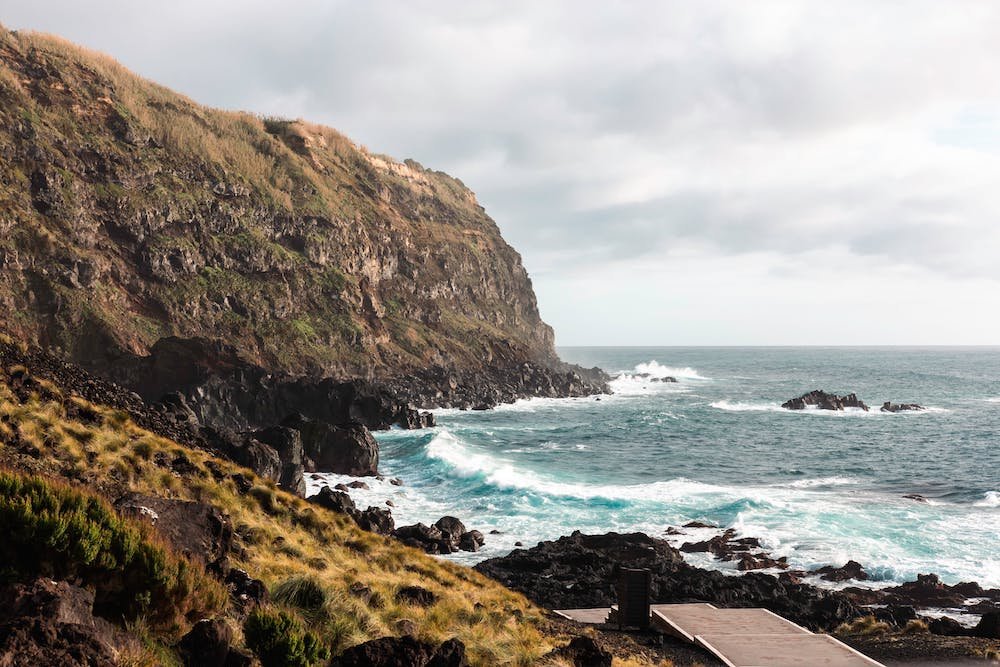
São Miguel, the largest and most populous island in the Azores archipelago, is a verdant paradise situated in the heart of the North Atlantic Ocean.
Known as the “Green Island,” São Miguel captivates visitors with its lush landscapes, volcanic craters, and azure-blue lakes.
The island, which is part of Portugal, is approximately 1,000 miles west of Lisbon, making it an accessible yet enchanting destination for those seeking a unique escape.
São Miguel is a canvas painted with the vibrant hues of nature. Visitors are greeted by the dramatic landscapes of Sete Cidades, where twin lakes reflect the surrounding greenery and volcanic craters.
The thermal springs of Furnas offer a mesmerizing display of geothermal activity, with bubbling mud pots and hot springs set against a backdrop of lush botanical gardens.
Beyond its natural splendors, São Miguel embraces a rich cultural heritage.
The historic city of Ponta Delgada, with its cobbled streets and colonial architecture, invites exploration.
Local markets, such as the Graça Market, provide a taste of Azorean life, offering fresh produce, traditional crafts, and local delicacies.
São Miguel beckons adventurers with a network of scenic hiking trails that traverse volcanic landscapes, dense forests, and coastal cliffs.
The Sete Cidades Loop and Lagoa do Fogo trails offer breathtaking views of the island’s natural wonders.
For water enthusiasts, the coastline presents opportunities for snorkeling, diving, and whale watching, allowing visitors to witness the marine beauty that surrounds São Miguel.
2. Terceira, Azores
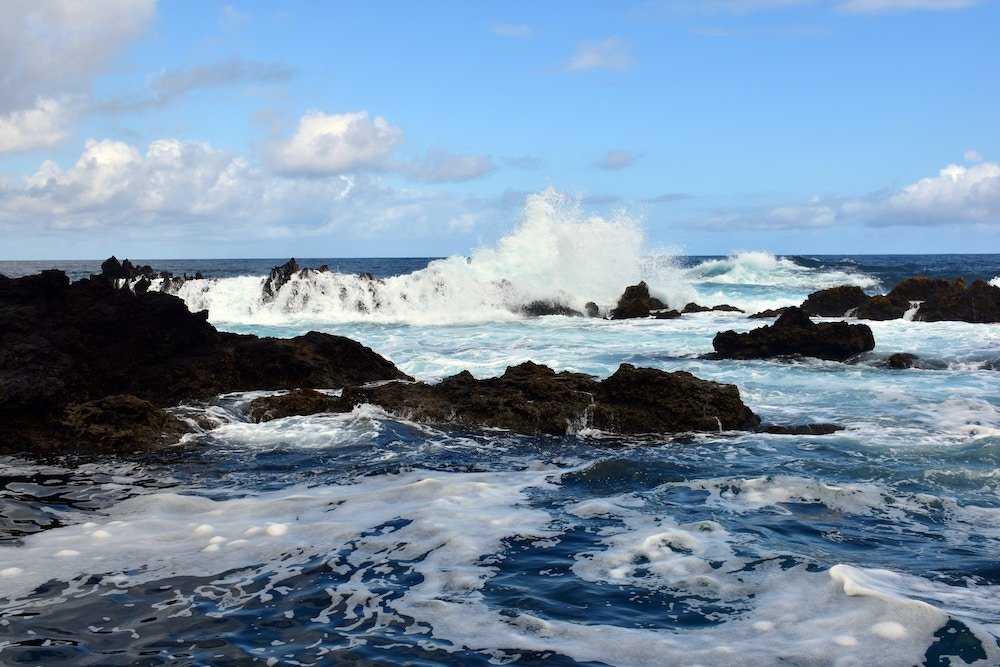
Nestled among the Azores, Terceira Island is a captivating blend of natural beauty and historical significance.
Located in the central group of the archipelago, Terceira has played a pivotal role in Portugal’s maritime history, serving as a strategic stopover for explorers and traders.
Today, it stands as a living testament to the Azorean heritage, offering visitors a journey through time.
Terceira boasts a wealth of landmarks that showcase its cultural and historical richness.
Angra do Heroísmo, the island’s capital and a UNESCO World Heritage site, enchants visitors with its well-preserved architecture, charming squares, and vibrant festivals.
The Monte Brasil peninsula provides panoramic views of the island and the Atlantic, while the Algar do Carvão, a volcanic chimney, offers a unique underground exploration experience.
Terceira’s historical significance is woven into its cobblestone streets and ancient structures.
The Sé Cathedral, dating back to the 16th century, is a masterpiece of Gothic and Moorish architecture.
The Fortress of São João Baptista, guarding Angra’s harbor, stands as a testament to the island’s defensive history.
Walking through the historic districts, visitors can immerse themselves in the island’s past, appreciating the blend of Portuguese and Azorean influences.
Terceira’s culinary scene is a delightful fusion of traditional Azorean flavors and unique local dishes.
Visitors can savor Alcatra, a slow-cooked meat stew, and taste Queijadas da Graciosa, a sweet pastry unique to the island.
The open-air markets, such as the Praça Velha Market, offer a chance to sample local cheeses, seafood, and other culinary delights that reflect Terceira’s agricultural and maritime heritage.
3. Pico, Azores

Pico, an island in the Azores archipelago, beckons travelers with its majestic landscapes and unique geographical features.
Located in the central group of the Azores, Pico is known for its volcanic origins, featuring Portugal’s highest peak, Mount Pico.
This island paradise, surrounded by the vastness of the Atlantic Ocean, offers a captivating blend of natural wonders and cultural richness.
Pico’s scenic beauty unfolds with panoramic views of lush vineyards, picturesque villages, and the iconic silhouette of Mount Pico dominating the skyline.
The UNESCO-listed vineyards, known as “currais,” are a testament to the island’s winemaking tradition, and visitors can explore these unique landscapes.
The island’s diverse ecosystems, from coastal plains to volcanic craters, create a visual tapestry that captures the essence of Pico’s natural allure.
For outdoor enthusiasts, Pico offers a playground of adventure.
Ascending Mount Pico is a challenge embraced by many, rewarding climbers with breathtaking views from the summit.
The island’s hiking trails, such as the Pico Mountain Trail, showcase the diverse flora and fauna that thrive in its volcanic soil.
Additionally, Pico’s coastline invites exploration, with opportunities for whale watching, diving, and enjoying the pristine beaches that line its shores.
Pico’s cultural vibrancy is not confined to its landscapes; it permeates the arts and events that define the island’s identity.
Visitors can explore the Museu do Vinho (Wine Museum), delving into the history of Pico’s winemaking traditions.
The island also hosts cultural events, such as the Festas de São João, where locals and visitors come together to celebrate with music, dance, and traditional cuisine.
Pico’s artistic spirit is further showcased in the works of local craftsmen, creating a unique cultural tapestry that adds to the island’s allure.
4. Madeira Island, Madeira Archipelago
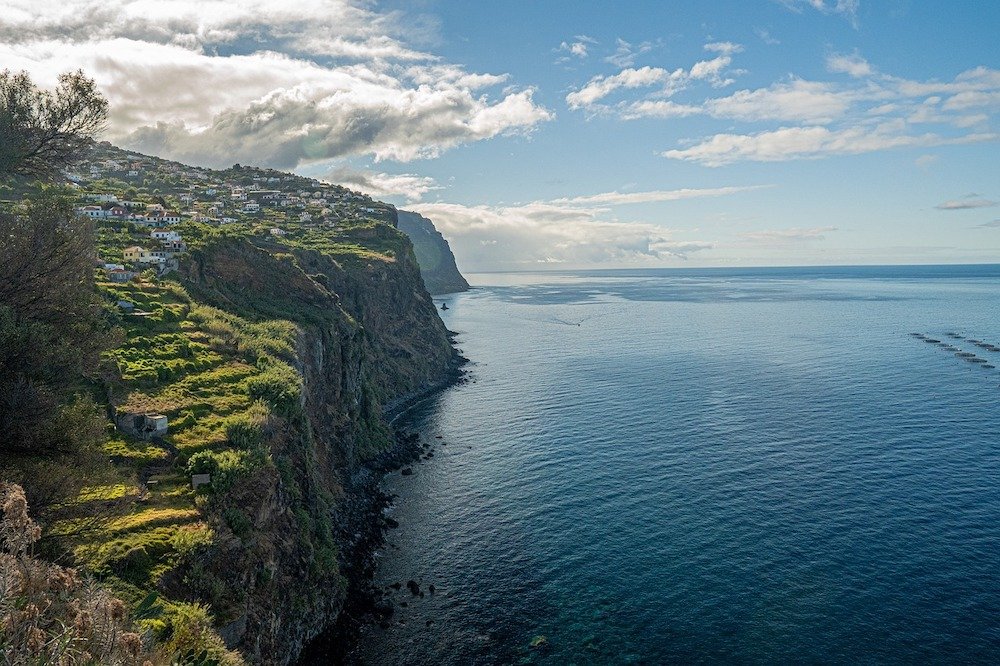
Madeira, the “Pearl of the Atlantic,” unfolds as an enchanting destination within the Madeira Archipelago.
Positioned in the Atlantic Ocean, Madeira Island is celebrated for its lush landscapes, temperate climate, and vibrant culture.
This idyllic island, surrounded by the azure waters of the Atlantic, welcomes travelers to a world where natural beauty and cultural richness converge.Madeira’s landscapes are a testament to nature’s grandeur.
The Laurissilva Forest, a UNESCO World Heritage site, showcases the island’s unique laurel forest ecosystem.
The rugged coastline, marked by towering sea cliffs and natural rock formations like Ponta de São Lourenço, offers panoramic views of the Atlantic.
Visitors can explore the Levadas, a network of irrigation channels turned hiking trails, providing a journey through lush greenery and picturesque vistas.
Madeira’s cultural tapestry comes alive through its vibrant festivals and traditional events.
The Funchal Carnival, a lively and colorful celebration, fills the streets with parades, music, and dance.
The Flower Festival, held in spring, transforms the island into a floral paradise, with streets adorned with intricate floral displays.
Traditional events like the Monte Festival and the Madeira Wine Festival offer glimpses into the island’s rich heritage, inviting visitors to partake in local customs and festivities.
As you traverse Madeira’s scenic landscapes, immersed in the island’s natural wonders, and engage in its cultural experiences, you’ll discover that Madeira is more than a destination—it’s a captivating journey where every step reveals the island’s unique charm.
5. Porto Santo, Madeira Archipelago

Porto Santo, a hidden gem within the Madeira Archipelago, unveils a distinctive allure that sets it apart.
Nestled in the Atlantic Ocean, this island presents a unique blend of natural beauty and tranquility.
Known for its golden beaches, therapeutic properties, and serene ambiance, Porto Santo offers a respite from the ordinary.
Porto Santo is renowned for its pristine beaches, stretching along the island’s coastline.
The golden sands, kissed by the Atlantic breeze, create a serene backdrop against the azure waters.
Praia do Porto Santo, the main beach, is a haven for sun-seekers, providing a tranquil expanse to bask in the island’s gentle climate.
The contrasting landscapes, with sand dunes and rocky formations, add to the visual appeal of Porto Santo’s coastal beauty.
Beyond the sun-drenched shores, Porto Santo invites visitors to explore the Atlantic’s embrace through various water-based activities.
The clear waters offer ideal conditions for snorkeling, allowing glimpses into the underwater world teeming with marine life.
For those seeking relaxation, the island provides charming spots like Calheta, where warm sands and calm waters create an idyllic setting for unwinding.
6. Flores, Portuguese Islands in the Atlantic
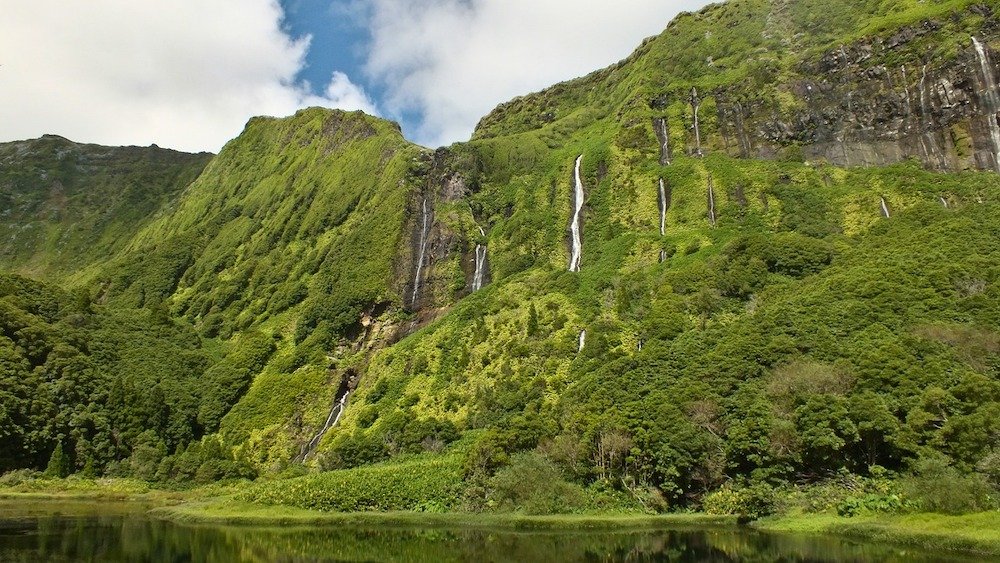
Flores, a jewel among the Portuguese Islands in the Atlantic, unfolds as a pristine canvas of natural beauty.
Situated in the westernmost part of the Azores archipelago, Flores is a testament to the unspoiled charm of the Atlantic landscape.
The island, named after its abundant flowers, captivates visitors with its lush greenery, dramatic cliffs, and serene ambiance.
Flores is adorned with a tapestry of natural wonders that invite exploration.
Cascading waterfalls, such as the Poco do Bacalhau and the Ribeira do Ferreiro, create a symphony of flowing water against the island’s green backdrop.
Lakes, including the Lagoa Funda and Lagoa Comprida, mirror the surrounding landscapes, offering tranquil settings for contemplation.
The Miradouro da Rocha dos Bordões provides panoramic views of the iconic basalt columns that define Flores’ rugged terrain.
Flores is a sanctuary for unique flora and fauna, embodying the importance of conservation efforts in the Portuguese Islands.
The island is home to endemic species, including the Azorean Bullfinch and the endangered Monteiro’s Storm-petrel.
The lush vegetation, dominated by laurel forests and heather-covered slopes, provides habitats for diverse wildlife.
Flores’ commitment to conservation is evident in its designation as a UNESCO Biosphere Reserve, ensuring the preservation of its ecological balance.
7. Graciosa, Portuguese Islands in the Atlantic

Graciosa, a true gem among the Portuguese Islands in the Atlantic, unfolds with an inviting quaint charm and a treasure trove of hidden gems.
Tucked away in the Azores archipelago, Graciosa captivates visitors with its simplicity, welcoming ambiance, and a unique blend of natural beauty and cultural allure.
Graciosa’s charm lies in its historical sites and vibrant cultural experiences.
The iconic Santa Cruz da Graciosa, a charming village with white-washed houses and cobbled streets, serves as a picturesque introduction to the island’s history.
The Caldeira, a massive crater surrounded by vineyards, offers a glimpse into the island’s geological past.
Visitors can explore the Furna do Enxofre, a volcanic cavity with a lake, providing an immersive journey into Graciosa’s unique landscapes.
The Museu da Graciosa showcases the island’s cultural heritage, featuring artifacts and exhibits that narrate its storied past.
Graciosa’s culinary scene is a delightful fusion of traditional Azorean flavors and unique local dishes.
Visitors can savor Queijadas da Graciosa, a sweet pastry that reflects the island’s culinary heritage.
The seafood, caught fresh from the surrounding Atlantic, graces the tables in the form of delicious dishes like Caldeirada de Peixe (fish stew).
The locally produced wines, particularly the Verdelho, add a touch of Graciosa’s terroir to the dining experience.
Exploring the quaint eateries and local markets reveals the island’s commitment to preserving its culinary traditions.
8. Santa Maria, Portuguese Islands in the Atlantic
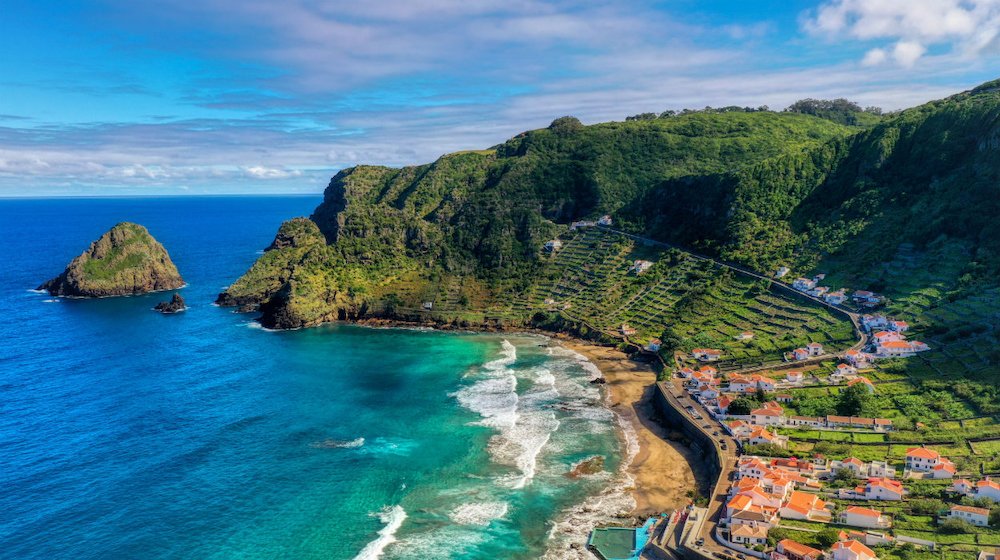
Santa Maria, a captivating jewel among the Portuguese Islands in the Atlantic, unfolds with historical significance and tranquil beauty.
Positioned in the southeastern part of the Azores archipelago, Santa Maria is the oldest of the Azorean islands, boasting a rich history that dates back to the Age of Exploration.
The island’s strategic location has made it a crossroads of cultures and a testament to the maritime heritage of Portugal.
Santa Maria’s coastline is adorned with inviting beaches that beckon visitors to unwind in their serene embrace.
Praia Formosa, with its golden sands and crystal-clear waters, stands as a testament to the island’s natural beauty.
Praia do Maçãs and Praia de São Lourenço offer picturesque settings for sunbathing and relaxation, surrounded by cliffs and lush landscapes.
Beyond the sun-soaked beaches, Santa Maria invites visitors to partake in water-based activities and discover relaxation spots.
The calm waters surrounding the island are ideal for snorkeling, diving, and other aquatic adventures. The Bay of São Lourenço provides a tranquil setting for sailing and yachting enthusiasts.
Santa Maria’s landscape, with rolling hills and peaceful valleys, creates perfect spots for hiking and picnicking, allowing visitors to connect with the island’s natural rhythm.
As you explore the historical significance, unwind on the pristine beaches, and engage in water-based activities, you’ll discover that Santa Maria is a destination that seamlessly blends its rich past with the tranquility of its present—a Portuguese island where history meets serenity.
Conclusion
As we conclude our exploration of the 8 most beautiful Portuguese islands, each destination reveals a distinct charm that contributes to the rich tapestry of the Azores and Madeira archipelagos.
From the volcanic landscapes of São Miguel to the golden beaches of Porto Santo, these Portuguese islands invite travelers to embark on a journey of discovery, where natural wonders and cultural treasures await at every turn.

FAQ’s About Portuguese Islands
How many islands are in Portugal?
Portugal has several islands across different archipelagos.
The two main archipelagos are the Azores and Madeira. The Azores consist of nine major islands, and Madeira has a main island and several smaller ones.
What Portuguese island is off the coast of Africa?
Madeira is the Portuguese island that is off the northwest coast of Africa.
It is an archipelago in the Atlantic Ocean, and its main island is known for its lush landscapes, vibrant culture, and temperate climate.
What is the island off the south coast of Portugal?
The islands off the south coast of Portugal are part of the Madeira Archipelago.
Porto Santo is one such island, known for its beautiful beaches and unique features. It is situated in the Atlantic Ocean, closer to the northwest coast of Africa.
What is the most beautiful island in Portugal?
Determining the “most beautiful” island is subjective and can vary based on personal preferences. Each Portuguese island has its own unique charm.
São Miguel in the Azores is often celebrated for its stunning landscapes, while Madeira is renowned for its diverse natural beauty.
Beauty is in the eye of the beholder, and the choice of the most beautiful island depends on individual preferences and interests.





